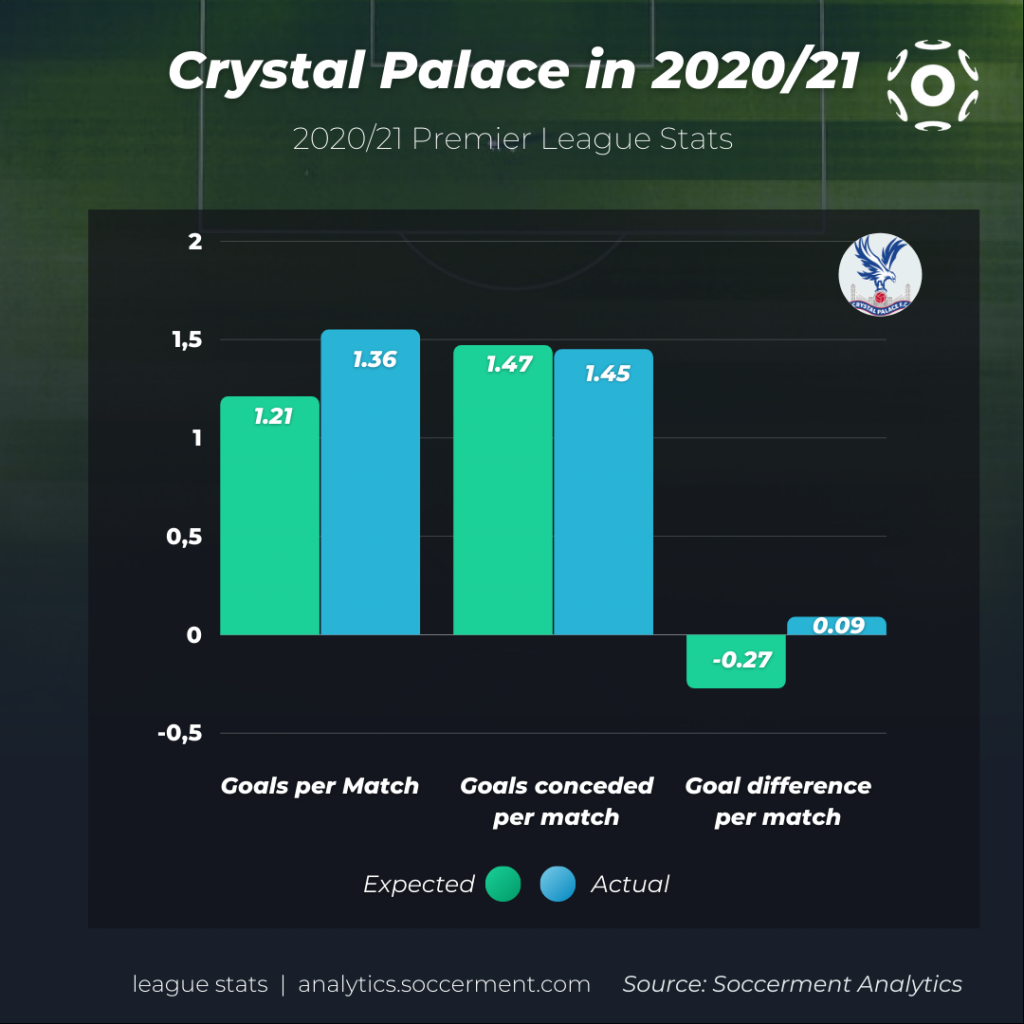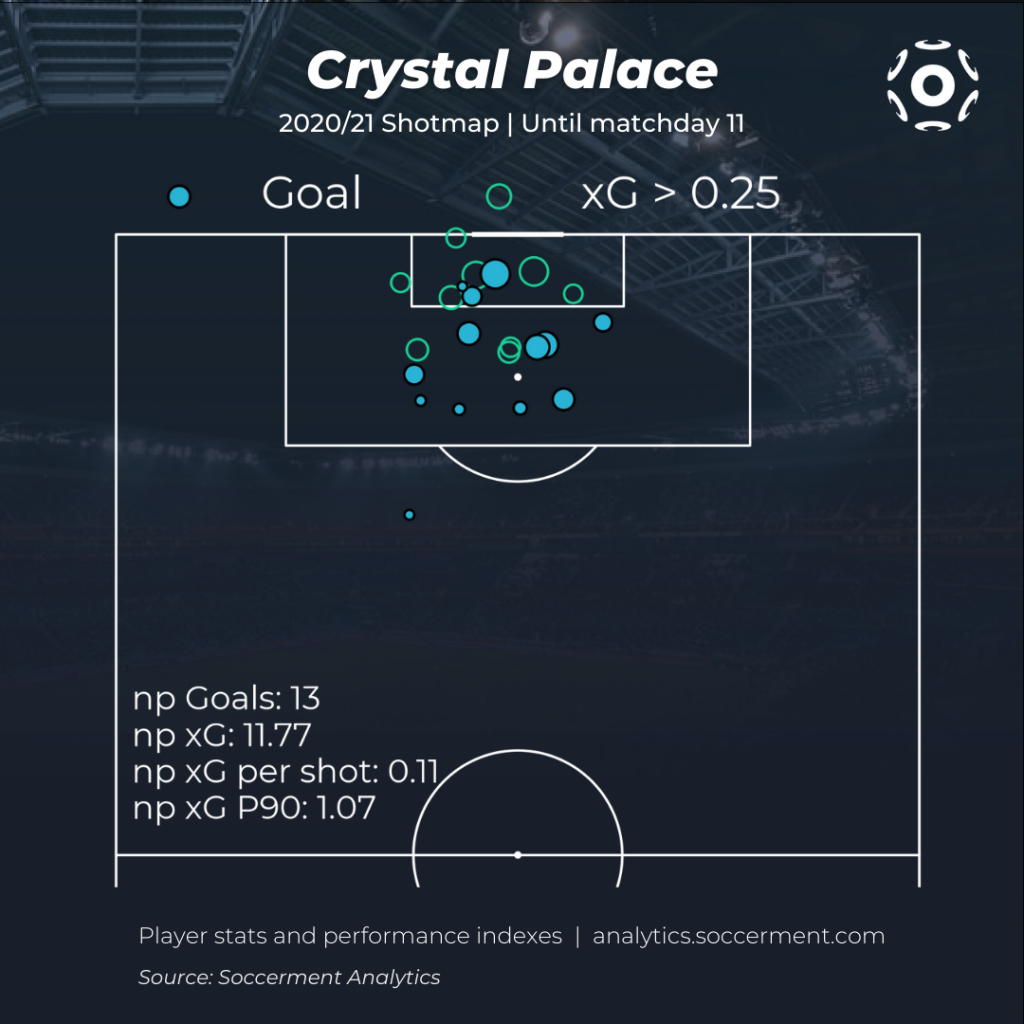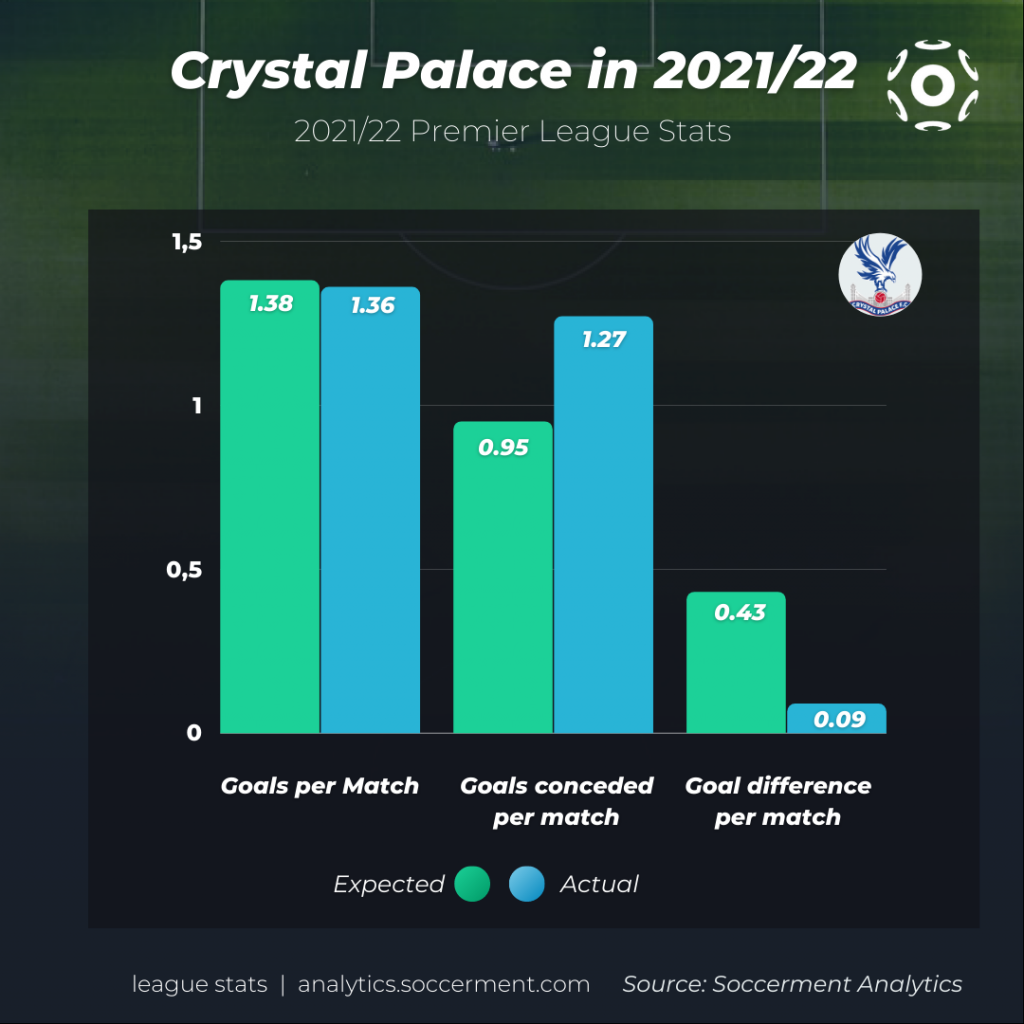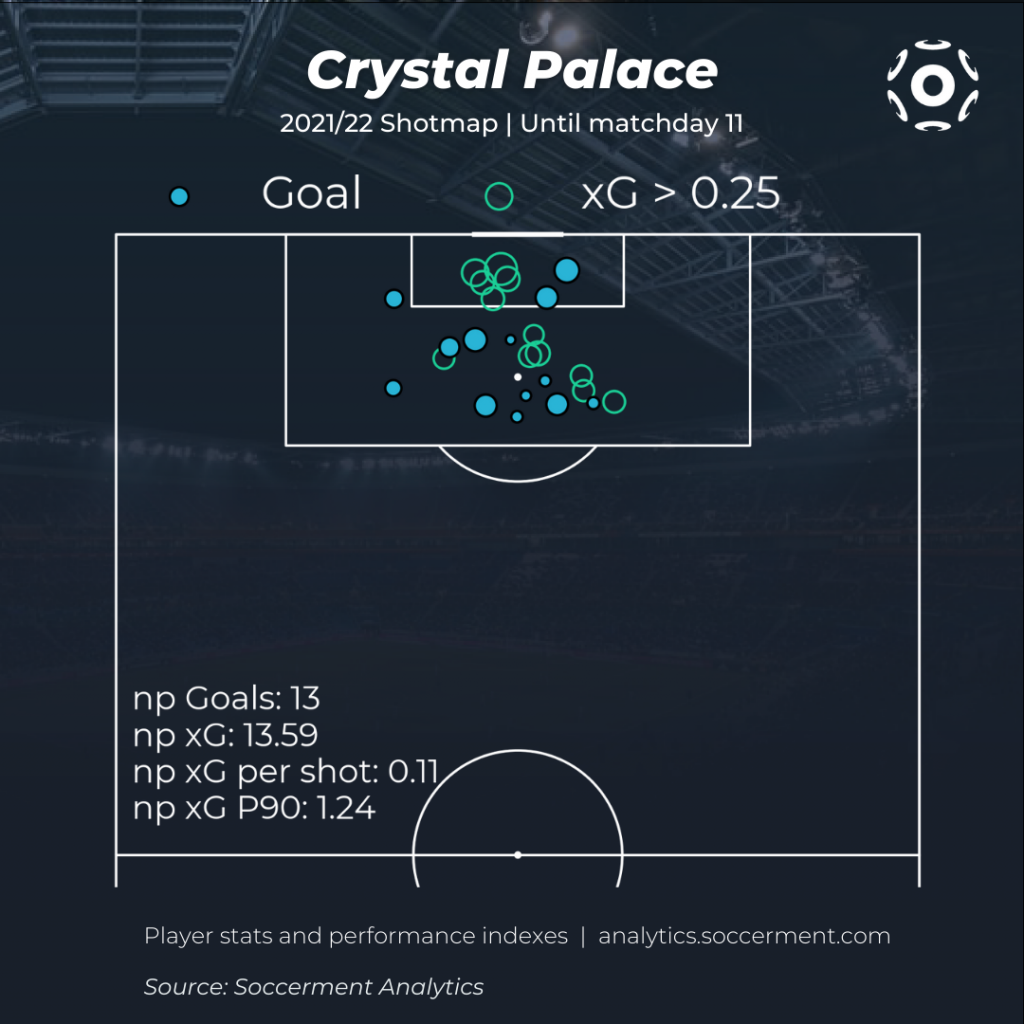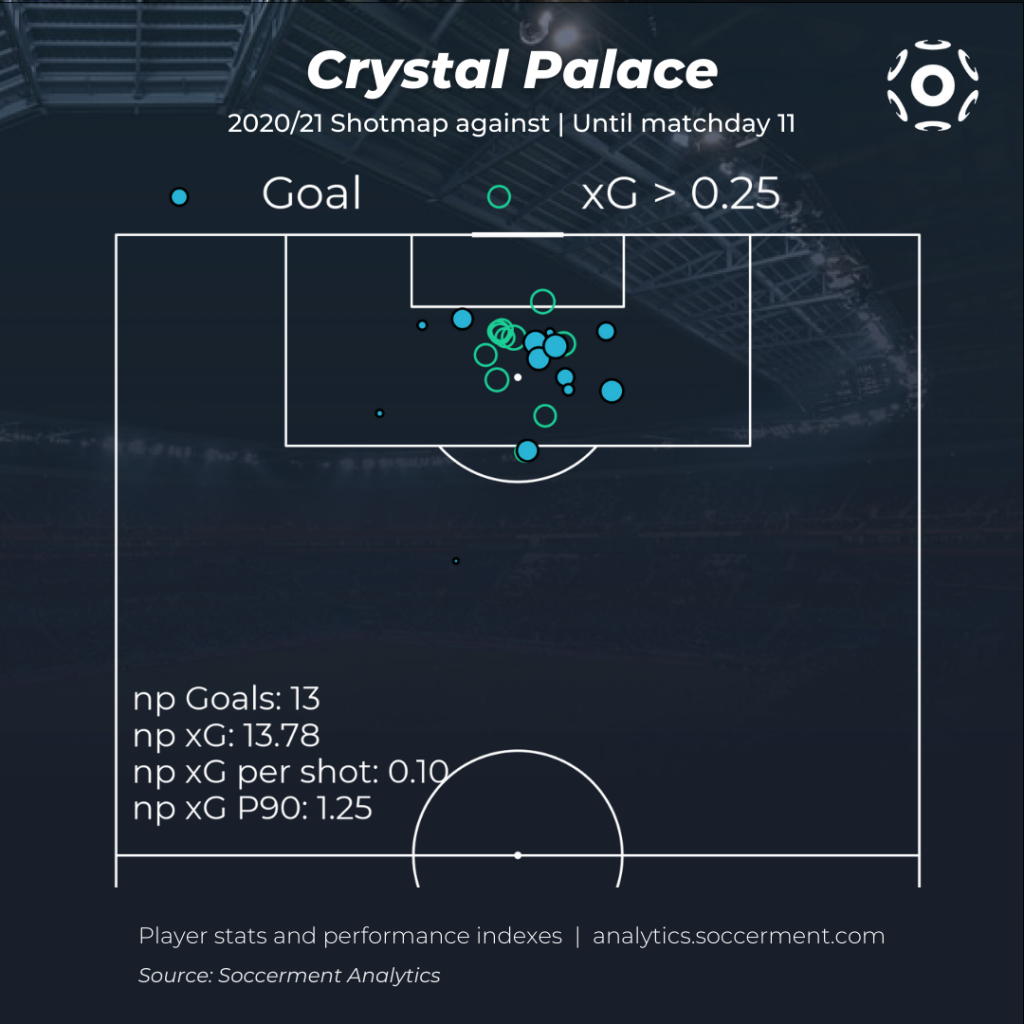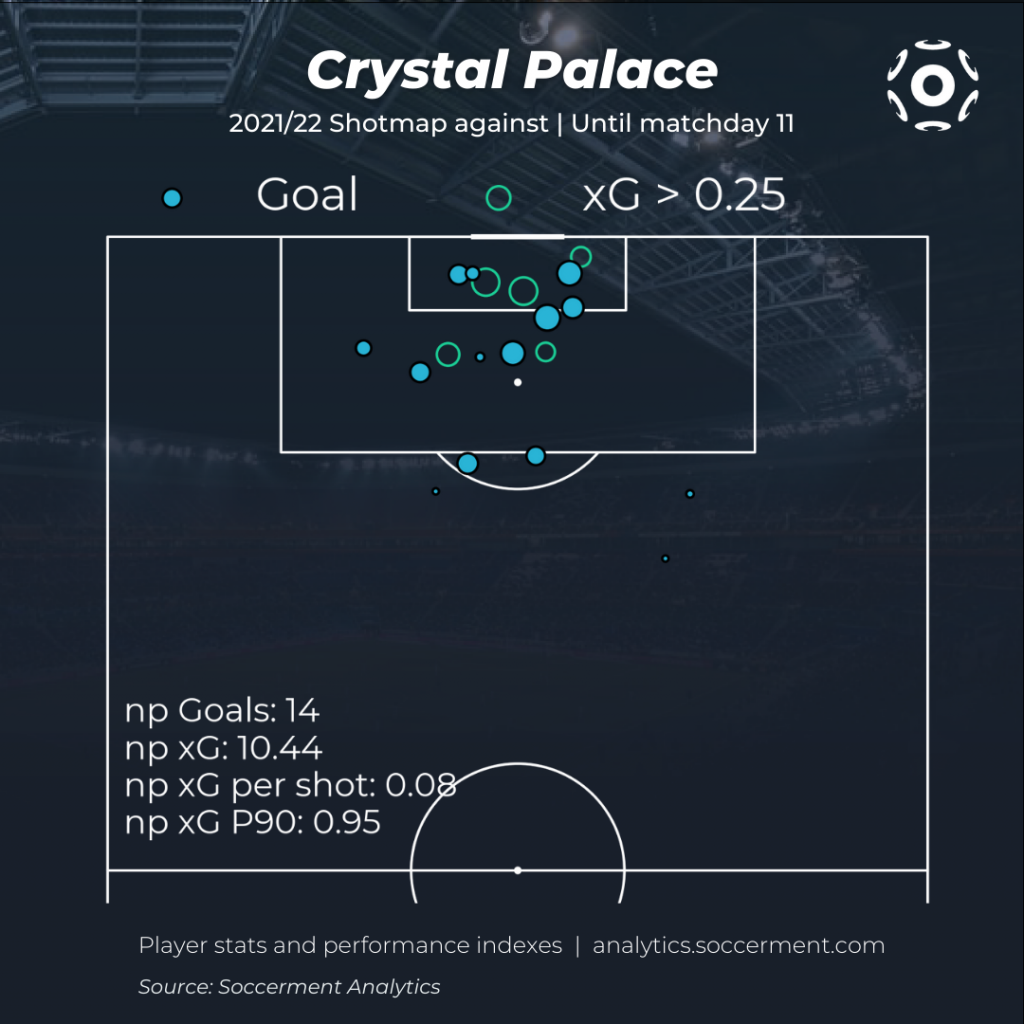Last summer came with many changes for Crystal Palace, with the end of Roy Hodgon’s tenure, the appointment of Patrick Vieira as manager and a very busy transfer window, which led to a very interesting team rejuvenation. If we compare the start of the current season with the same period of 2020/21, the Eagles have collected one less point and have the same goal difference. On the surface, one might believe that the aforementioned changes have had little or no effect. However advanced statistics and performance metrics tell a very different story.
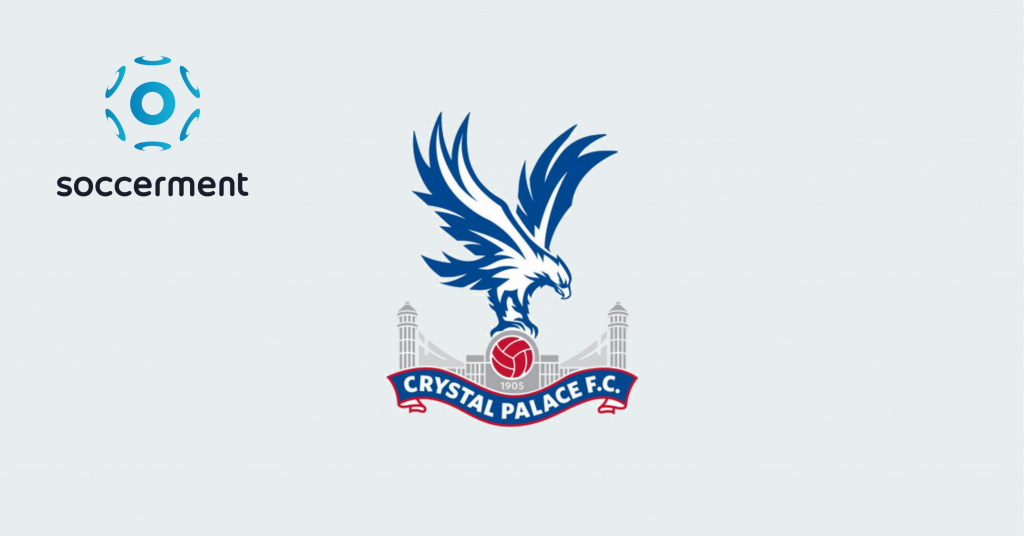
A smart summer transfer window
During the summer transfer window, the Eagles made several smart transfers. The club acquired players with an average age of 22.5, and let go of 8 players aged 30 or more, leading to a significant reduction in the team’s average age. The £66 million spent by the club in the summer could not only give a significant boost in the quality of the team, but also prove to be a profitable investment in the future. However, the club wasn’t able to monetize the departure of their aging players which left on free transfers, leaving Palace’s income from the transfer window at £0.
| Name | Age | Position | Transfer fee (£M) | SPR (total) | SPR 2021/22 |
| Guehi | 21 | CB | 21 | 45 | 52 |
| Andersen | 25 | CB | 15.75 | 54 | 51 |
| Édouard | 23 | ST | 14.67 | 47 | 47 |
| Olise | 19 | CAM | 8.37 | 36 | N.A. |
| Hughes | 26 | CM | 6.3 | 43 | N.A. |
| Gallagher | 21 | CM | Loan | 40 | 47 |
| Total | 22.5 | – | 66.09 | 44.17 | 49.25 |
Comparing the start of 2020/21 and 2021/22: same outcome, different performance
Analyzing Soccerment’s advanced metrics, we can capture the difference in Crystal Palace’s performances across the last two seasons. Expected Goals (xG), already show stark differences between the start of the two seasons, that is, if we limit ourselves to matchday 11.
During this season, Palace have underperformed, registering a +1 Goal difference compared to a +4.71 Expected Goals Difference (xGD). This is in contrast with the results of last season which saw the Eagles outperform their xG and xG Against (xGA) tally (+1 goal difference, -2.79 xGD in the first 11 matchdays). Specifically, xG have increased from 13.3 to 15.6, and xGA have decreased from 16.1 to 10.4. That is to say, while the outcome in terms of goal difference has been the same, the team is performing much better this year, and not yet reaping the full benefits of their performance, while one could say they got better results than they deserved in the first 11 matches of last season.
It is also worth noting that this season’s calendar has pitted the Eagles against stronger opponents than the corresponding matches of 2020/21. This year, Palace have faced opponents with an average xGD of 0.34 per match (in the 10 matches they played against other teams), including Manchester City, Liverpool and Chelsea, while last season, the first 11 matchdays saw the Eagles face opponents with an average xGD of -0.20 per match.
Why are Palace conceding more goals than expected?
Even though the scoring chances that the Eagles concede to their opponents this season are fewer (3.3 fewer non-penalty xGA) and of lower threat (0.02 fewer npxGA per shot on average), compared to last season’s corresponding period, they have conceded one more goal.
The underperformance versus xGA in this season can be partially attributed to the poor performances of starter goalkeeper Guaita, who has let in more goals than expected based on our Expected Goals on Target (xGoT) model (see full details in the explainer article). Based on the initial xG value and the shot placement within the goal mouth for on-target shots, our model estimates that Palace should have conceded 12.2 goals, 1.8 less than the 14 they actually did. We can compare Guaita’s shot-stopping performance with his previous seasons at Palace, by normalizing for the total xGoT faced. In this season, the Spanish goalkeeper is letting in 0.15 more goals than expected per xGoT faced, a worse result than last season (0.04) and much worse than 2019/20, his best season by far in recent years, when he actually prevented 0.18 goals per xGoT faced (9.1 goals prevented in total). The rest of the xGA underperformance can be attributed to the finishing abilities of the attackers of the opposing teams, and, as always in football, to some degree of chance.
Tactical notes: a move toward more possession-based play
Under the experienced Roy Hodgson (oldest manager in PL history at over 72 years of age) Crystal Palace adopted a very pragmatic approach in line with Hodgon’s philosophy.
Numerous changes have been made to the team’s setup: first of all the Eagles switched from a 4-4-2 formation to a 4-3-3 formation. Benteke maintained his spot at the center of the attack with Zaha and Edouard or J. Ayew completing their frontline. Gallagher has been a crucial addition in the heart of midfield adding high intensity to the midfield as well as goal contributions thanks to his ability to arrive in the box and get on the end of chances. Andersen’s and Guehi’s addition to the backline also facilitated the manager’s willingness to play from the back.
During the course of last season, Palace managed just 40% ball possession. The number of passes was significantly below the EPL average (149 per match in their own half, 144 in the opposite half against an average of 196). Also their average passing accuracy was lower than average (76.1% vs 80.6%).
This year’s numbers, instead show significant improvement in all metrics placing them in line with the EPL’s average. For the first time in years Crystal Palace have an average ball possession of over 50% (51% to be precise). The average passes per match have significantly increased: 222 per match in their own half (+49%) and 169 in the opposition half (+17%). With regards to their passing accuracy with a current value of 81.8% they are currently 7th in the Premier League, a significant leap from last year’s 17th place.
Also the defensive approach has changed a lot, under Vieira the Eagles now record an average PPDA (Passes Per Defensive Action, a measure of the team’s ability to pressure the opponent in their own half) of 12.62 which ranks them 10th in the league. In the 2020/21 season, Crystal Palace averaged a PPDA of 16.68, 17th in the league. A high value of PPDA is usually associated with teams who tend to sit back and allow opposing teams possession of the ball, on the contrary lower values of PPDA are typical of teams who employ a high-intensity pressing system. This noticeable difference is a clear indication that Vieira wants to change the team’s playing style towards a more possession-based system. This year’s acquisitions are in line and appear to be functional to reach this goal.
Player Focus
Conor Gallagher
Since his arrival in July, Conor Gallagher has given new energy to the team, especially on the attacking side. Starting from midfield, he frequently makes runs into the box where he can receive from dangerous positions, he is in fact, along with Zaha, the top scorer of the team with 4 goals, the first in terms of xG (3.95), and sixth overall in the Premier League. The Chelsea loanee is also ranked fifth in the league for Shooting Goals Added, our metric which measures a player’s shooting ability by increasing their scoring probability with respect to their initial xG. He is also the first in the team in terms of xOVA (expected Offensive Value Added), which certifies his role as main creator of scoring chances for the Eagles.
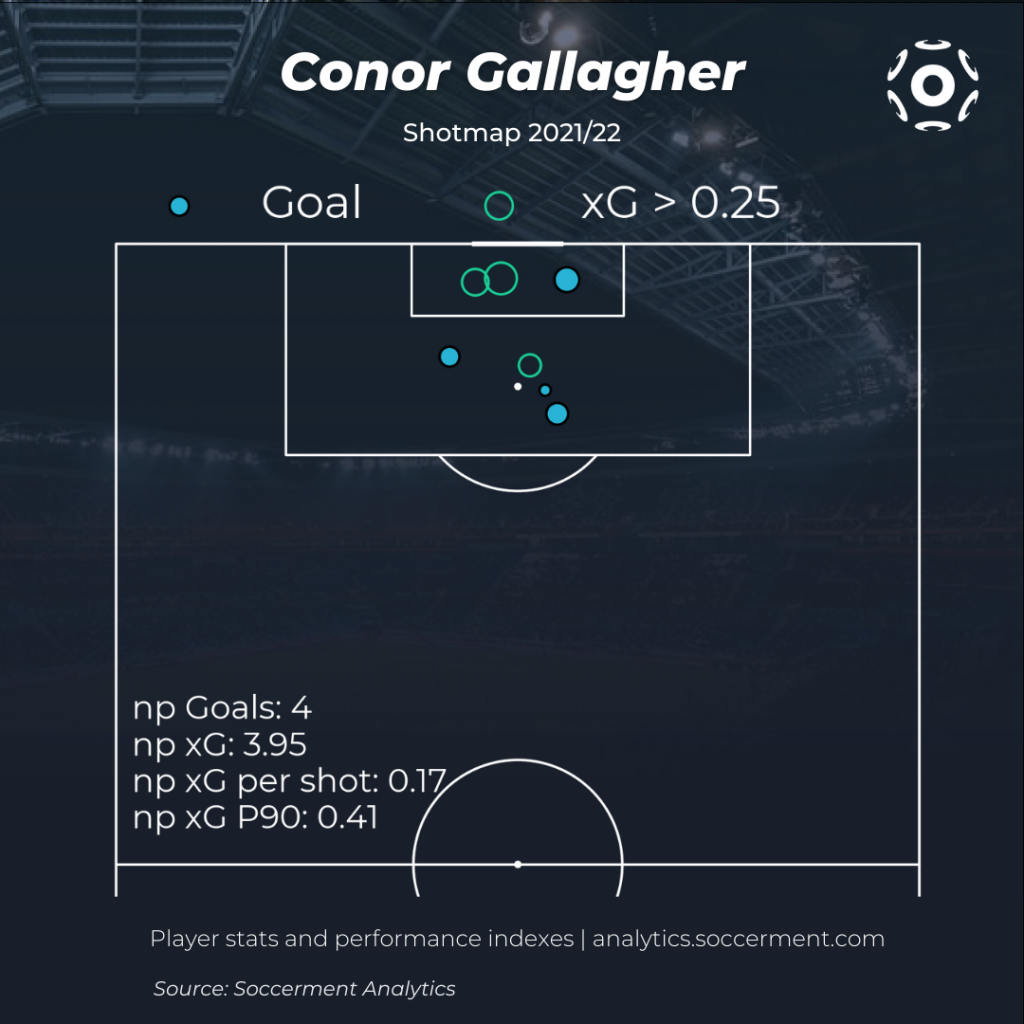
Wilfried Zaha
Usually playing on the left in the front trio, Zaha, in his seventh season at Palace, is, along with the aforementioned Gallagher, the greatest offensive threat of the team. He is the best in the team for xA (1.97), followed by Gallagher himself. One of Zaha’s main strengths is his dribbling ability, which earns him seventh place for successful dribbles in the Premier League (23), but with a lower-than-average dribble success ratio (47.9% vs 54.5%). The fact that he is the player with most fouls won in the Premier League (31) certifies how complicated it is for defenders to stop him.
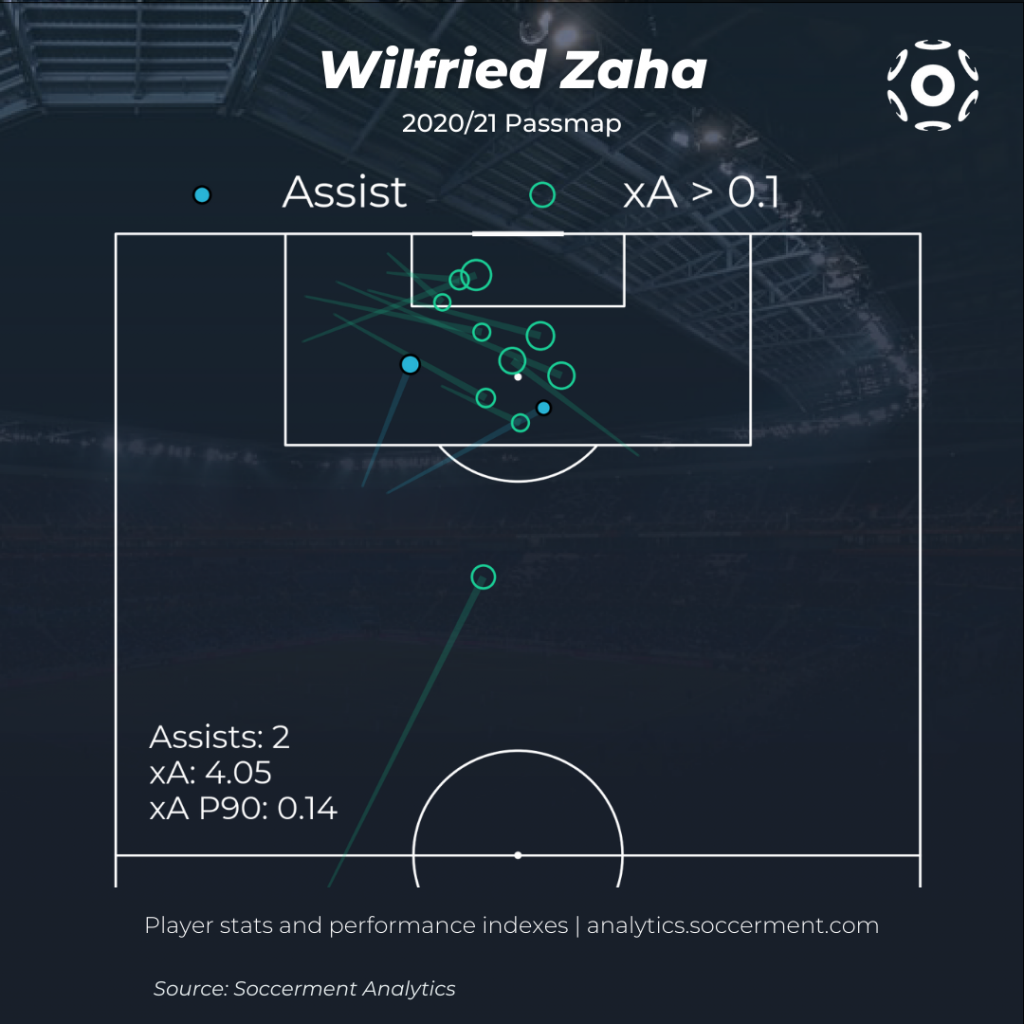
Christian Benteke
The 30 year-old forward is third for aerial duels won (60) in the league, with an aerial success ratio of 60.5%, proving his prowess to win aerial duels. However, coherently with the tactical changes, geared towards possession-oriented football compared to the 20/21 season, he has attempted less aerial duels P90 (17.87 in the last season vs 11) but created more chances P90 (0.74 last season vs 1.19) taking advantage of the increased associativity of the team and the additional front partner.
Michael Olise
After proving himself with Reading in last year’s Championship where he was one of the league’s main assist providers (12, 2nd best in the league), the 19-year-old wonderkid made a leap to the Premier League joining the Eagles for £8.4m. Under Viera’s new system, Olise could feature on the right wing or also as a very offensive Mezzala in order to maximize his creative ability.
Conclusions
The comparison between Crystal Palace’s start of the season with the corresponding period of last season is a good example of how advanced metrics and analytics can provide deeper insight into football performance that goes beyond the final result certified by points and goals.
The arrival of Patrick Vieira has marked big changes at Selhurst Park. First and foremost he has geared his side towards a more possession-based style of football which is evident when analyzing Crystal Palace’s build-up metrics. The Eagles’ underlying performance, as measured by our advanced metrics, shows that the new manager’s approach (coupled with a smart transfer window) is starting to bear fruit, even as the actual outcome in terms of goal difference is the same as last year at the same stage during the season. Therefore, it is reasonable to expect an improvement in the team’s results, as outcomes increasingly align themselves with expected results in the long term. Moreover, given the young age and potential of their acquisitions the club will hope to reap the benefits of these investments in the short term through their performances and in the long term through capital gain on player sales.

